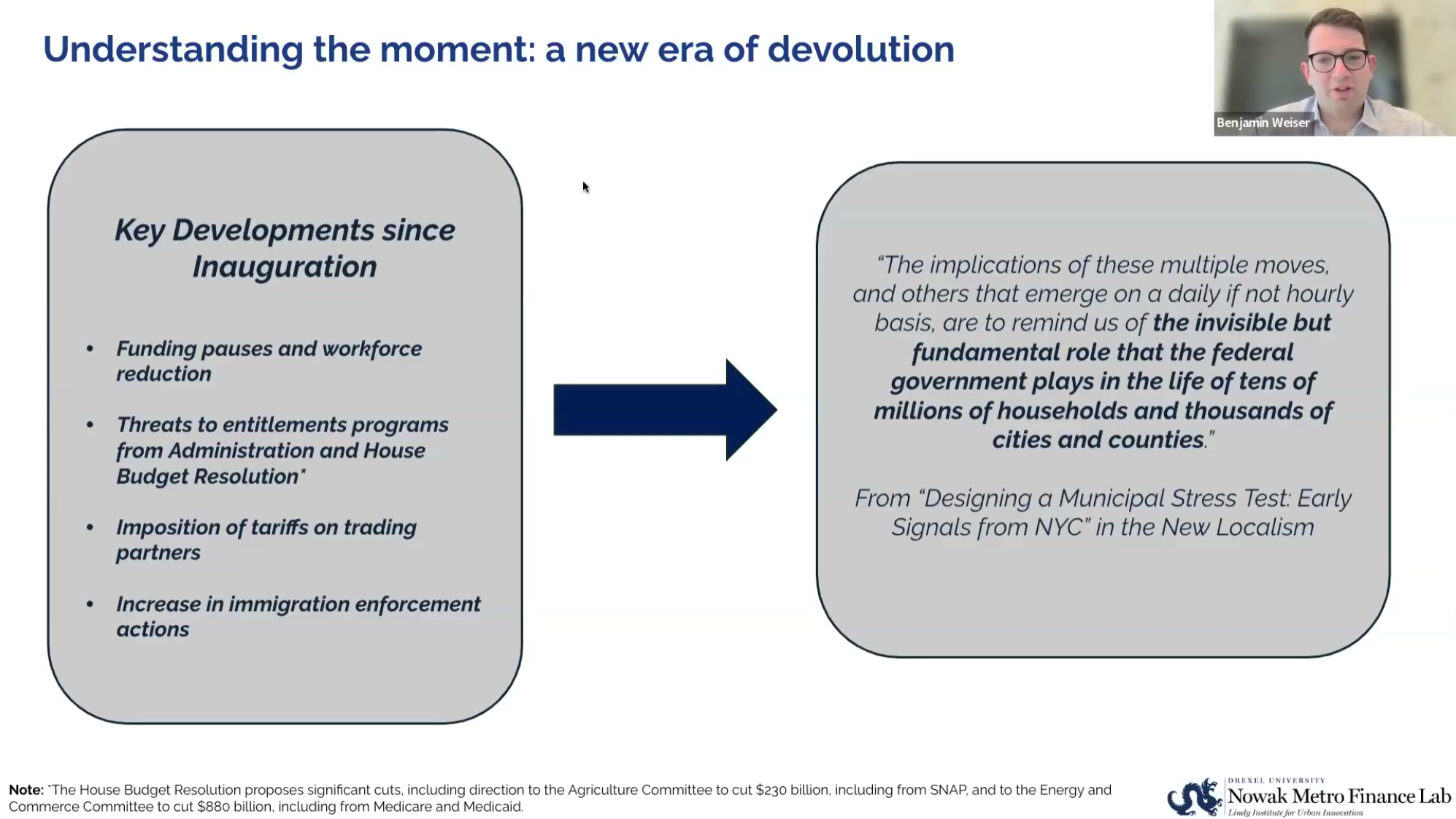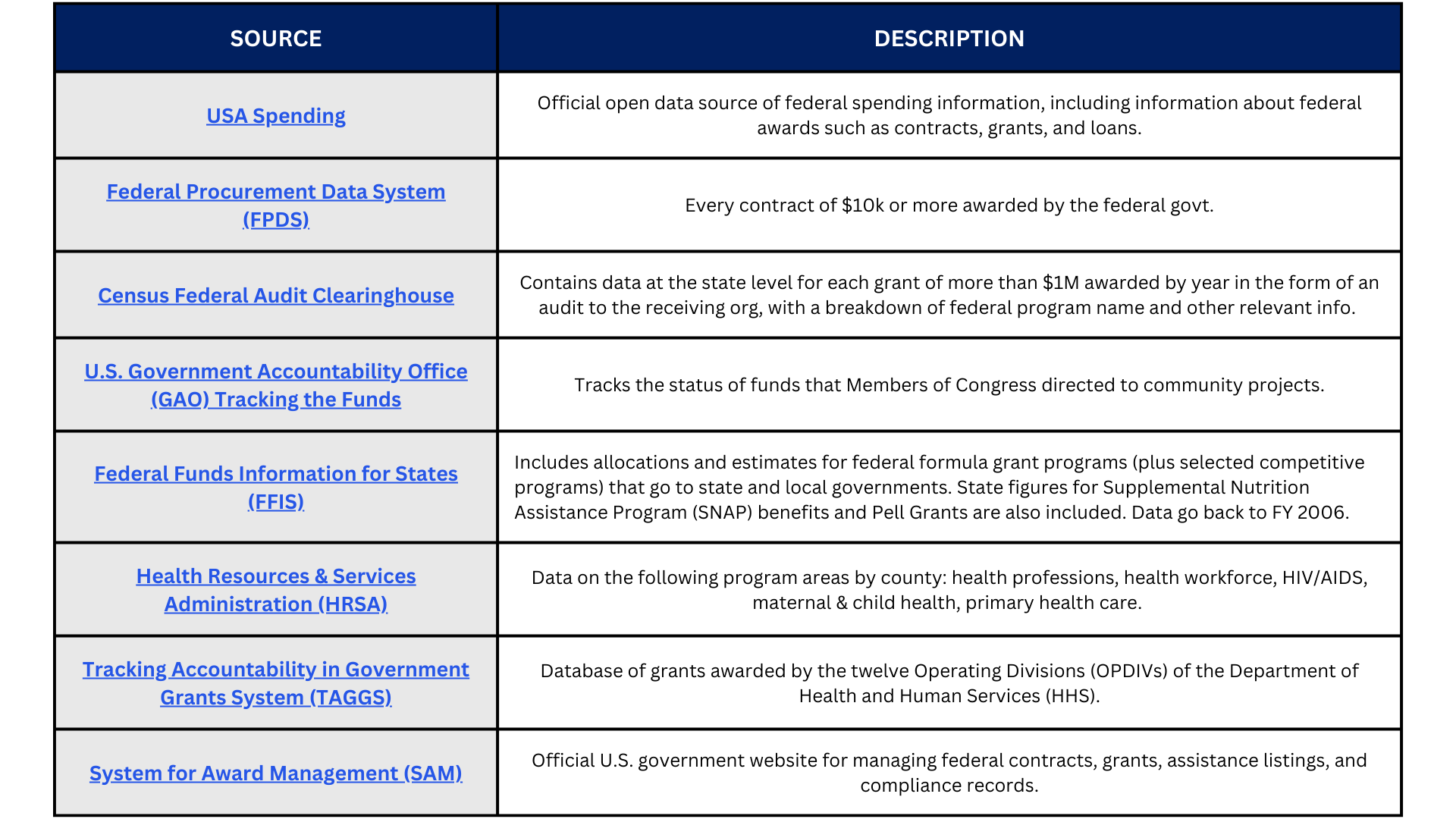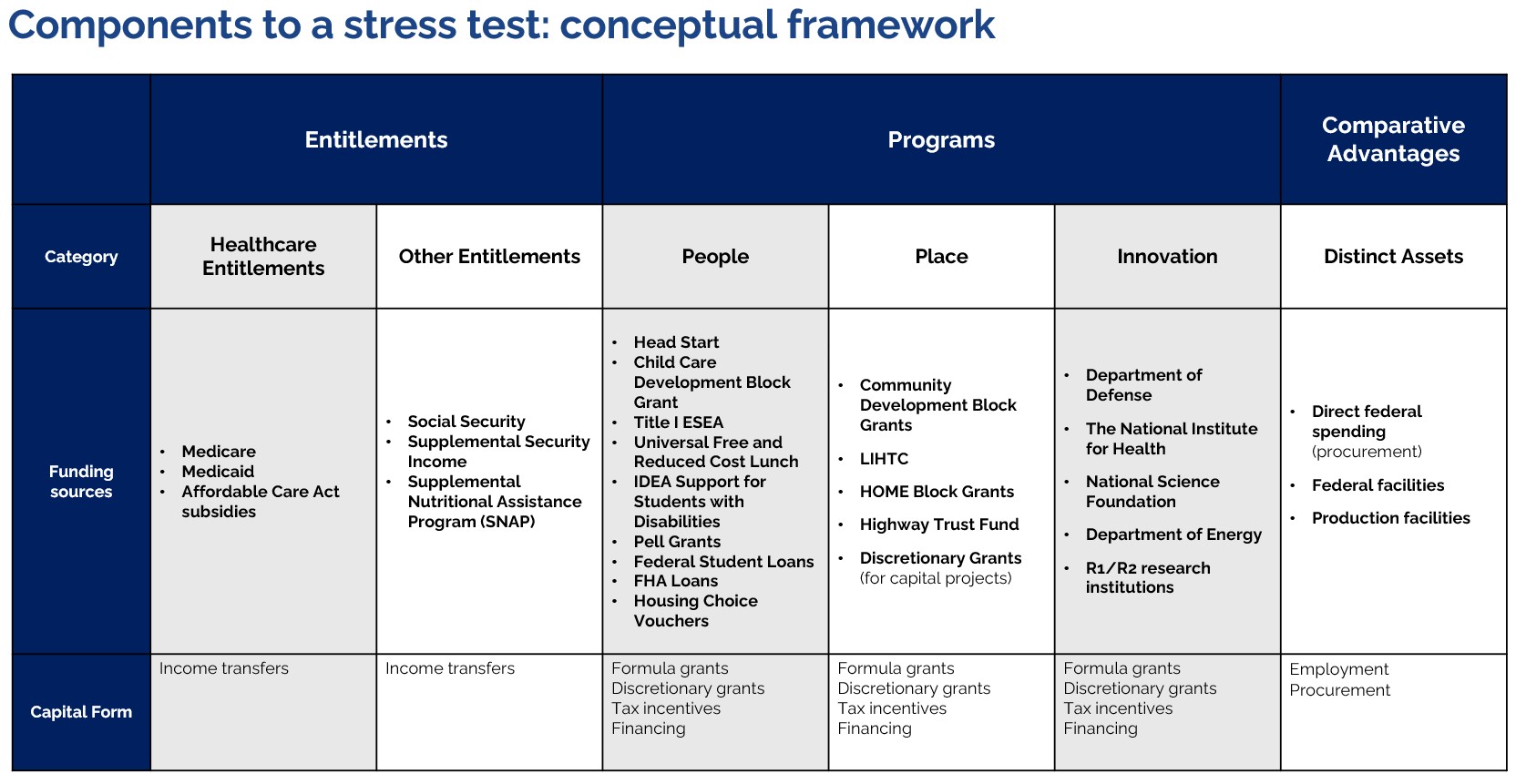Local Leaders Must Prepare Now for Potential Federal Budget Impact
Published in collaboration with Accelerator for America and Key Strategic Group
March 21, 2025
Authored by Mary Ellen Wiederwohl, Bruce Katz, Chanell Hasty, Benjamin Weiser, Anne Bovaird Nevins, and Erica Henderson
Th
What Can Local Leaders Do Now?
罗
-
Aggregating funding data by sector and geography;
-
Categorizing funding by risk level based on legislative trends and executive actions:
-
Conducting assessments of potential disruptions and community impact; and
-
Engaging key stakeholders in data collection and validation.
In that same session, Benjamin Weiser, of the Nowak Metro Finance Lab, discussed Comptroller Lander’s approach and illustrated how other localities can learn from and replicate the approach with a conceptual framework that delineates federal funding into entitlements and programmatic investments, while also expanding consideration beyond just local government budgets to capture a holistic view of the role of federal funding in the broader local economy.

薄
How Can Local Leaders Perform a Stress Test?
Step 1: Organize Around Potential Funding Challenges
妈
Step 2: Perform a Landscape Analysis
在

This chart includes a list of online resources where groups can identify federal funding flowing into their communities. Access a PDF version with clickable links by visiting this link.
Not all funding flows in the same way or to the same recipients. Entitlements and people focused funding largely go to individuals and households, or provide benefits to them through intermediaries (i.e., in the case of workforce development funding). Alternatively, place and innovation funds flow through an array of grants, tax incentives, financing, and go to or through a set of recipients that make up the local economy. Funding also flows at varying paces and based on different criteria – disaster relief and recovery is predicated on requisite declarations from a Governor and/or President and will cut across both people and place.
The following segmentation, into three constituent components, can be replicated to match the ubiquity of federal funding, while also accounting for distinct impacts:
-
Entitlements: Focused on income and food security, as well as healthcare;
-
Programmatic Funding: Broken down into people, place, and innovation buckets; and
-
Comparative Advantages: Distinct assets, or federal funding for anchor institutions, federal facilities, and production facilities, that are unique to your community or region (including that related to federal procurement).
After analyzing the federal funds at risk, local leaders can aggregate data to anticipate funding gaps and community needs, alongside a dashboard of risk levels and capital types.
Step 3: Develop and Simulate Funding Scenarios
房颤

*This includes funding to NYC Dept of Education, CUNY for Federal Aid, and for NYC Department of Housing Preservation and Development Section 8 Voucher portfolio; **federal funding for NYC’s current Capital Budget; *** federal funding to MTA’s 2020-2024 Capital Plan
Step 4: Evaluate and Communicate Impact
在
Step 5: Mitigation and Adaptation Plan
The last step involves something localities do well: planning. After organizing, analyzing, simulating, evaluating, and communicating, it’s time to create mitigation and adaptation plans to prepare for potential federal funding cuts. Just like emergency preparedness and local sustainability plans, these plans will make communities more resilient to future storms and shocks coming from Washington and protect goals for fostering economic opportunity for residents. These plans should put forth strategies for adapting current budgets to existing and future changes that come out of Washington, as well as long-term strategies for building fiscal resiliency.
After the Stress Test: What Lies Ahead
Th